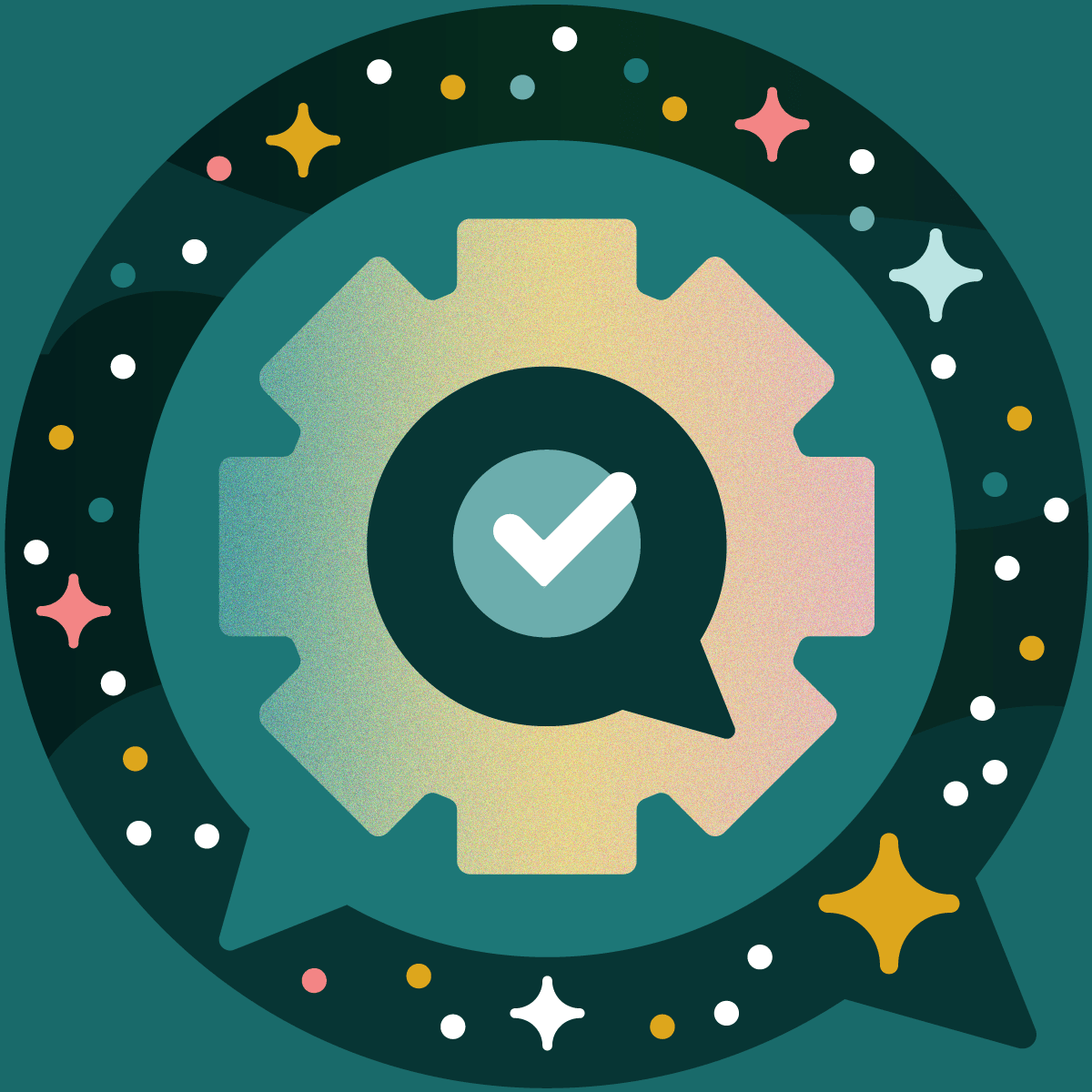How ChatOps Can Help DevOps Better Streamline Communication and Automation
ChatOps brings communication and automation tools together to enhance DevOps practices. By integrating chat platforms with development and operations workflows, teams can collaborate more efficiently and respond faster to issues.
ChatOps enables DevOps teams to streamline processes, improve visibility, and reduce response times. Through chatbots and integrations, routine tasks can be automated directly from chat interfaces. This allows team members to execute commands, deploy code, and monitor systems without switching contexts.
ChatOps fosters a culture of transparency and knowledge sharing within DevOps teams. By centralizing communications and actions in chat rooms, all team members can stay informed about ongoing activities and contribute their expertise when needed. This collaborative approach helps break down silos between development and operations, leading to more cohesive and effective DevOps practices.

Understanding ChatOps in the DevOps Context
ChatOps integrates chat platforms with operational tools to streamline DevOps workflows. This approach leverages automation and conversation-driven collaboration to enhance efficiency and communication.
Defining ChatOps and Its Role in DevOps
ChatOps combines chat interfaces with DevOps processes, creating a centralized hub for team communication and task execution. It allows developers and operations staff to interact with tools and services directly from chat platforms.
Teams can trigger commands, deploy code, and monitor systems without leaving their messaging interface. This integration reduces context switching and improves productivity.
ChatOps facilitates real-time collaboration, enabling team members to share information and solve problems quickly. It creates a transparent environment where actions and their outcomes are visible to all participants.
Key Components of ChatOps: Tools and Bots
Chat platforms form the foundation of ChatOps. Popular options include Slack, Microsoft Teams, and Discord. These platforms provide the interface for team interactions and bot integrations.
Bots are automated assistants that respond to commands and perform tasks. They act as intermediaries between chat interfaces and DevOps tools.
Common bot functions include:
Deploying code
Running tests
Monitoring system status
Managing infrastructure
DevOps tools integrate with bots to extend their functionality. Examples include version control systems, CI/CD pipelines, and monitoring solutions.
Automation scripts connect these components, allowing bots to execute complex workflows with simple chat commands.
Enhancing Collaboration and Workflow Through ChatOps
ChatOps integrates communication tools with DevOps processes to improve teamwork and streamline operations. It enables real-time collaboration and automates routine tasks, leading to faster problem-solving and increased productivity.
Streamlining Workflows with Chatbots
Chatbots play a crucial role in ChatOps by automating repetitive tasks and providing quick access to information. Teams can execute commands, deploy code, and monitor systems directly from chat interfaces. This integration reduces context switching and accelerates decision-making.
Chatbots can handle routine inquiries, freeing up team members to focus on more complex issues. They can also trigger automated workflows, such as initiating builds or running tests, based on chat commands.
By centralizing operations in chat platforms, teams gain a unified view of their workflows. This consolidation makes it easier to track progress, identify bottlenecks, and improve processes over time.
Breaking Down Silos and Fostering Transparency
ChatOps promotes cross-functional collaboration by bringing different teams together in shared chat channels. This approach breaks down traditional silos between development, operations, and other departments.
Team members can easily share updates, ask questions, and provide assistance in real-time. This constant communication fosters a culture of transparency and mutual support.
ChatOps tools often integrate with version control systems, issue trackers, and monitoring platforms. This integration provides a comprehensive view of the development and operations landscape, ensuring all team members have access to the same information.
By making conversations and actions visible to the entire team, ChatOps creates a shared history of decisions and problem-solving approaches. This transparency improves knowledge sharing and helps new team members get up to speed quickly.
Integrating and Automating DevOps Processes
ChatOps enables seamless integration and automation of DevOps workflows. It streamlines processes, improves collaboration, and enhances operational efficiency across teams.
Automation in Deployment and Operations
DevOps teams leverage ChatOps to automate deployment and operational tasks. Popular tools like Jenkins, GitLab CI/CD, and CircleCI integrate with chat platforms, allowing teams to trigger builds and deployments directly from chat interfaces.
These integrations enable rapid response to issues and facilitate faster release cycles. For example, a team member can initiate a deployment by typing a simple command in the chat, triggering the entire process automatically.
Automated notifications keep everyone informed about build statuses, test results, and deployment progress. This real-time visibility helps teams quickly address any issues that arise during the deployment process.
Leveraging APIs for Seamless Integration
APIs play a crucial role in connecting various DevOps tools and services through ChatOps. RESTful APIs and webhooks enable bidirectional communication between chat platforms and DevOps systems.
For instance, monitoring tools can send alerts to chat channels via APIs when performance thresholds are breached. Team members can then investigate and resolve issues directly from the chat interface.
API integrations also allow for querying and updating infrastructure configurations. DevOps teams can retrieve server statuses, modify database settings, or scale cloud resources using simple chat commands.
From Continuous Integration to Continuous Delivery: Tools and Strategies
ChatOps facilitates the transition from Continuous Integration (CI) to Continuous Delivery (CD) by integrating various tools and strategies. Version control systems like Git integrate with chat platforms, allowing teams to manage code changes and trigger CI/CD pipelines.
Popular CI/CD tools such as Travis CI, TeamCity, and Azure DevOps seamlessly connect with chat interfaces. This integration enables teams to monitor build processes, run tests, and deploy code to different environments with ease.
ChatOps also supports feature flagging and canary releases. Teams can use chat commands to toggle features on or off, gradually roll out changes, and quickly revert if issues arise.
Case Studies: ChatOps Tools in Action
ChatOps tools have transformed incident management and monitoring practices for DevOps teams. Real-world examples demonstrate their effectiveness in streamlining communication and enhancing operational efficiency.
Incident Management with Real-Time Chat Tools
Slack has revolutionized incident response for many organizations. One tech company integrated Slack with their monitoring systems, enabling automatic alerts in dedicated incident channels. This integration allowed team members to quickly assess and respond to issues.
Engineers could invoke chatbots to run diagnostic commands directly within Slack. This reduced context-switching and accelerated problem-solving. The chat history also served as a real-time log of incident management steps.
Microsoft Teams proved invaluable for a financial services firm during a critical outage. The platform's video conferencing feature facilitated rapid virtual war rooms. Simultaneously, chatbots pulled relevant system data into the conversation, ensuring all participants had access to up-to-date information.
ChatOps for Enhanced Monitoring and Notifications
GitHub's integration with ChatOps tools has improved code deployment monitoring. Development teams receive instant notifications about build statuses and pull requests directly in their chat platforms. This immediate feedback loop has significantly reduced response times to potential issues.
A healthcare technology company implemented a ChatOps solution that aggregated alerts from multiple monitoring systems into a single chat channel. This centralized approach eliminated alert fatigue and helped prioritize critical notifications.
The system also allowed team members to acknowledge and claim ownership of specific alerts through simple chat commands. This clear assignment of responsibilities improved accountability and reduced duplicate efforts in addressing monitoring alerts.
Best Practices for Implementing ChatOps in DevOps
Effective ChatOps implementation requires careful planning and execution. Key considerations include ensuring security, fostering collaboration, and integrating with existing workflows.
Ensuring Security and Compliance
Security is paramount when implementing ChatOps in DevOps environments. Organizations should implement strong authentication measures, such as multi-factor authentication and single sign-on, to protect chat platforms and associated tools.
Encryption of data in transit and at rest is essential. Regular security audits and compliance checks help maintain a secure ChatOps ecosystem.
Access controls should be granular, allowing teams to restrict sensitive information and commands to authorized personnel only. Implementing audit trails for all ChatOps activities aids in compliance and troubleshooting efforts.
Cultivating a Culture of Collaboration and Continuous Improvement
ChatOps thrives on open communication and teamwork. Organizations should encourage knowledge sharing through chat channels, fostering a culture of transparency and collaboration.
• Create dedicated channels for specific projects or teams • Establish clear guidelines for communication etiquette • Promote the use of chatbots for routine tasks and information retrieval
Regular feedback sessions help refine ChatOps processes. Teams should continuously evaluate and improve their ChatOps practices, adapting to changing needs and technologies.
Training programs ensure all team members understand ChatOps tools and best practices. This knowledge empowers teams to leverage ChatOps effectively in their daily workflows.
Integration into IT and Business Workflows
Seamless integration of ChatOps into existing IT and business processes is crucial for success. Organizations should map out current workflows and identify areas where ChatOps can add value.
Integrating ChatOps with popular DevOps tools streamlines operations. This includes connecting chat platforms with:
Version control systems
Continuous integration/continuous deployment (CI/CD) pipelines
Monitoring and alerting tools
Ticketing systems
Automating routine tasks through chatbots reduces manual effort and improves efficiency. Teams can create custom chatbots to handle specific workflow requirements.
Establishing clear escalation paths within chat channels ensures timely resolution of critical issues. This integration of ChatOps into incident management processes enhances team responsiveness.
Frequently Asked Questions
ChatOps provides numerous benefits for DevOps teams, enhancing collaboration, automation, and efficiency. Let's explore some common questions about integrating ChatOps into DevOps practices.
How can ChatOps streamline the DevOps workflow?
ChatOps streamlines DevOps workflows by centralizing communication and operations in a single platform. Teams can execute commands, deploy code, and monitor systems directly from chat interfaces.
This integration reduces context switching and improves response times. DevOps professionals can quickly access information and take action without leaving their communication channels.
What is the role of ChatOps in facilitating team communication?
ChatOps serves as a central hub for team communication, bringing together developers, operations staff, and other stakeholders. It enables real-time collaboration and information sharing.
Team members can discuss issues, share updates, and make decisions within the chat environment. This transparent communication fosters better teamwork and faster problem-solving.
Which ChatOps tools are commonly used to enhance DevOps practices?
Popular ChatOps tools for DevOps include Slack, Microsoft Teams, and Mattermost. These platforms offer integrations with various DevOps tools and services.
Chatbots like Hubot and Errbot are often used to automate tasks and respond to commands. Jenkins, GitLab, and GitHub also provide ChatOps integrations for continuous integration and deployment.
How does ChatOps contribute to the automation of DevOps tasks?
ChatOps enables teams to automate routine DevOps tasks through chatbots and integrations. Users can trigger scripts, run tests, and deploy code using simple chat commands.
This automation reduces manual effort and the risk of human error. It also allows teams to standardize processes and ensure consistent execution of tasks across the organization.
What benefits does ChatOps provide in tracking and deploying software releases?
ChatOps improves visibility and control over software releases. Teams can initiate and monitor deployments directly from chat interfaces.
Release notifications and status updates can be automatically shared in chat channels. This real-time tracking helps teams quickly identify and address any issues during the deployment process.
In what ways does ChatOps enable real-time monitoring and incident management for DevOps teams?
ChatOps integrates monitoring tools with chat platforms, allowing teams to receive alerts and notifications in real-time. This immediate visibility helps in quickly detecting and responding to incidents.
Teams can collaborate on troubleshooting within the chat environment. They can share logs, run diagnostic commands, and coordinate response efforts, leading to faster incident resolution.

Build a more powerful help desk with Risotto
Minimize Tickets and Maximize Efficiency
Simplify IAM and Strengthen Security
Transform Slack into a help desk for every department
Schedule your free demo



